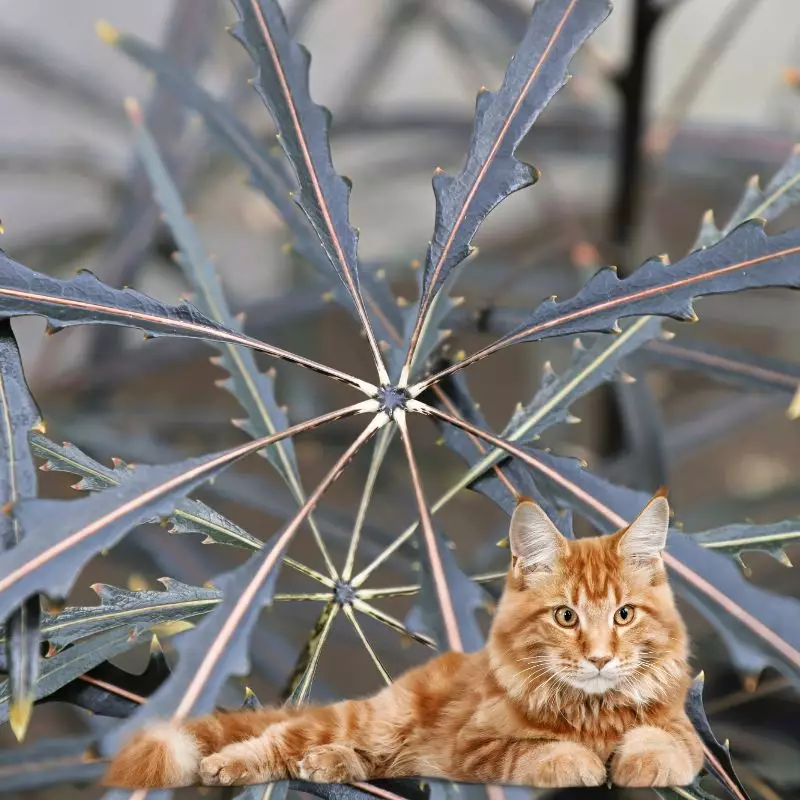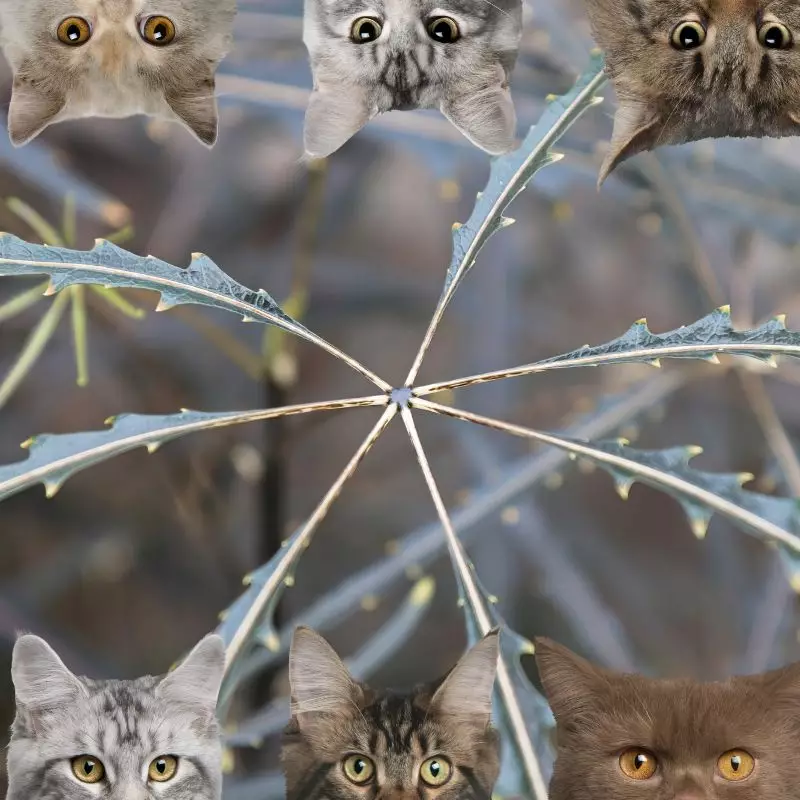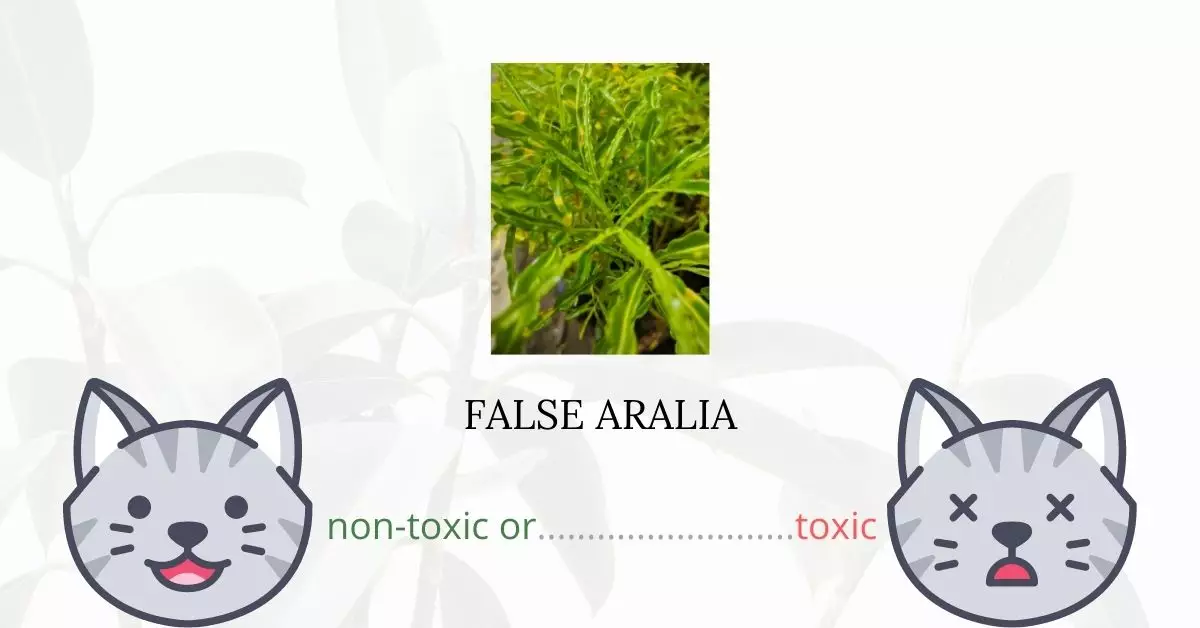False aralia is non-toxic for cats. If you have this plant at home, you can be assured of its safety around your feline friends.
This article has been written in collaboration with a team of experienced DVMs (doctors of veterinary medicine). Their expert contributions, paired with thorough research from high-authority websites such as ASPCA and PetMD, ensure that we provide accurate and up-to-date information on the potential risks associated with various plants, specifically False Aralia in this instance.
Notably, the American Society for the Prevention of Cruelty to Animals (ASPCA) includes False aralia in their list of non-toxic plants. Continue reading to gain a deeper understanding of False aralias and their interaction with cats.
Can Cats Eat False Aralia?

Your cats will not experience adverse effects from eating a piece of false aralia. However, since it is a plant, it is still best to not let your cats eat it.
Felines may experience indigestion due to eating large amounts of plants. Their bodies cannot properly digest plant materials because they are carnivores. Thus, you should not allow your cat to nibble on your houseplants regularly.
You should also know that using chemical products on your plants may have effects on your feline companions. As much as possible, only use organic products on your plants. This will prevent the risk of poisoning from toxic substances from chemical products such as fertilizers and pesticides.
What is False Aralia?

False aralia is botanically called Plerandra elegantissima. It is also formerly called Schefflera elegantissima and Dizygotheca elegantissima. The false aralia is a species of flowering plant in the family Araliaceae, native to New Caledonia.
False aralia may grow to be 8 to 15 meters tall and 2 meters wide. It’s a type of evergreen shrub or tree. It has slender, coppery red to dark green leaves with serrated margins and 7 to 11 leaflets. The leaves of grown-up plants are substantially larger. It yields clusters of light green blooms in the fall, followed by black fruit.
Young false aralias cultivated in tiny pots can be placed on a tabletop, desk, or other surfaces. The plants blend well with other houseplants; the general airiness is a fantastic compliment to houseplants with bigger foliage. Older false aralias with woody trunks are ideal for adorning blank walls, softening furniture, and creating a live privacy screen or room divider.
Keeping Cats Away From False Aralia

The usual nibblers are those cats who are bored or hungry. Keeping your cat well-fed and mentally stimulated will prevent them from getting their paws on plants.
It is ideal for your plants to be placed in a high place or in a room where your cat cannot go into. If the plants are not within their paws’ reach, it is highly unlikely that they will touch them.
Experts also suggest spraying vinegar on your plants. Cats have sensitive olfactory senses and they do not like the sour smell of vinegar so they tend to avoid anything that has the same smell.
Plants to Avoid For Your Cats
If you are a cat owner and unsure if the plants growing in your yard are harmful to your cats, check out this list of toxic plants for cats. You can also check our list of non-toxic plants for cats.





